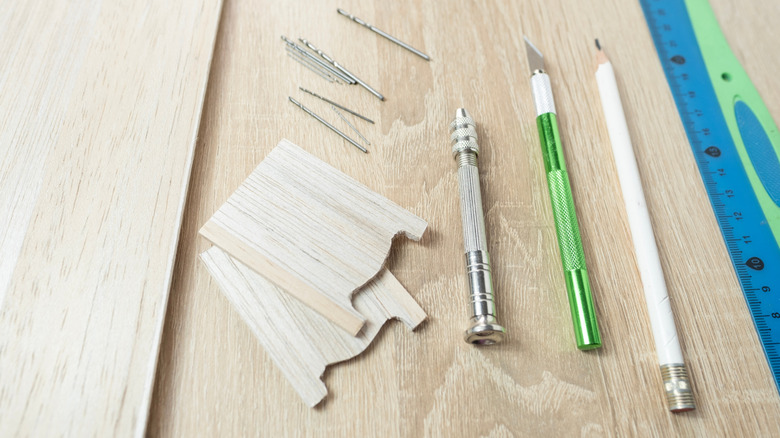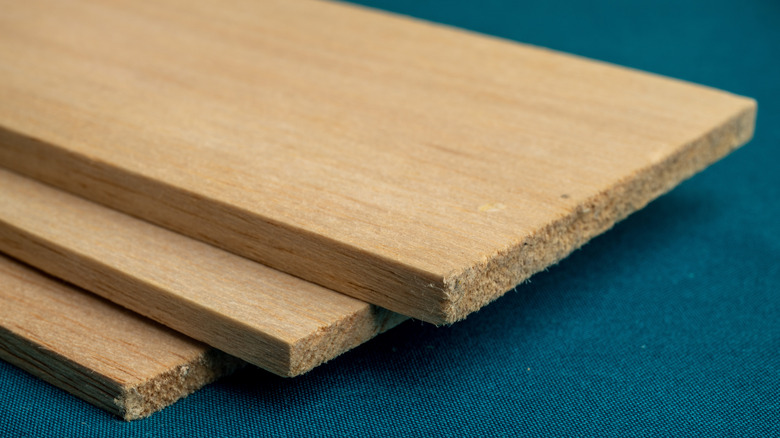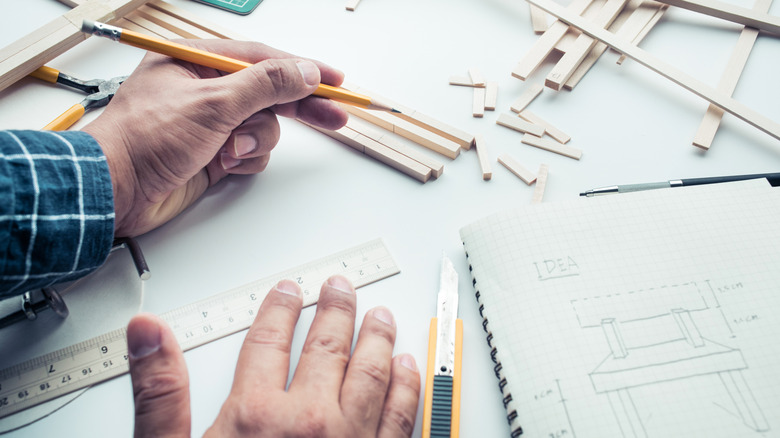The Startling Disadvantages Of Using Balsa Wood For Projects
When a project requires wood, balsa wood is a go-to for a reason; it's lightweight, easy to work with, and affordable. It's also considered relatively strong for its weight, but that doesn't mean it's good to use for every project. When you're choosing wood for your next DIY project, there are disadvantages to using balsa wood to be aware of.
While it may be strong, balsa wood isn't very durable. Sourced from the balsa tree, scientifically known as Ochroma pyramidale, this wood is technically considered a hardwood despite its softness and pliability. Because it's so soft, balsa doesn't hold nails and screws well, so it's better to join pieces of your project together with strong wood glue.
When immersed in water, balsa wood's structure has plenty of room to soak it up due to its low density, causing the wood to warp. If your project is going to be in/near water or exposed to the elements, you'll need to seal the wood to prevent moisture damage. And water isn't the only element balsa wood needs to be protected from; it's also susceptible to fungus, rot, and insect problems, particularly termites.
Combatting balsa wood's strength problems
Because of these potential problems, balsa wood requires a few extra precautions to use it effectively. It needs sealing to prevent water damage, as well as additional treatment to keep termites away. Forgoing these proactive treatments can lead to compounding issues, since termites will be even more drawn to moist, rotting wood. Wood damage can cause structural integrity issues, which could lead to your whole project falling apart. If you're building a model ship, that's annoying but not a huge deal. If you're building a deck, that can be catastrophic.
If you want to get granular (pun intended), pay attention to the grain of your balsa wood since its durability is affected by where you'll be putting compression on it relative to the wood's microstructure. In scientific terms, balsa wood, like all wood, has greater axial strength than radial strength. In simpler terms, cell structures that are oriented in the same direction the tree grows help it hold up better than if you apply compression to the cells that run from the center of the tree outward. This means that putting weight on balsa wood parallel to the grain is less likely to bend or damage it than putting tension on it running perpendicular to the grain. This is especially important to note if your project is intended to withstand any weight.
What projects is balsa wood good (and bad) for?
With all this in mind, balsa wood is better for some projects than others. It's a popular choice for modeling kits and small building projects because of its easy workability. This makes balsa great for DIY ideas like adding a chic touch to your dining table with balsa wood or building a simple shelf, but for projects that get a lot of wear-and-tear like furniture and flooring, you'll want to go with a sturdier wood like oak. Generally, if you're looking for another more durable and relatively cheap multipurpose wood, plywood may be a good option for your project, too.
Balsa's low density causes it to float, so it does well as a fishing lure or surfboard as long as you don't skip the protective sealing treatments. Just because it can handle moisture in those scenarios doesn't mean it will survive as an outdoor structure exposed to the rain and other elements over time — you're setting yourself up for a fungus and insect problem. Plus, whatever project you have in mind, avoid using balsa for anything that will place it near an open flame since it's highly flammable.


